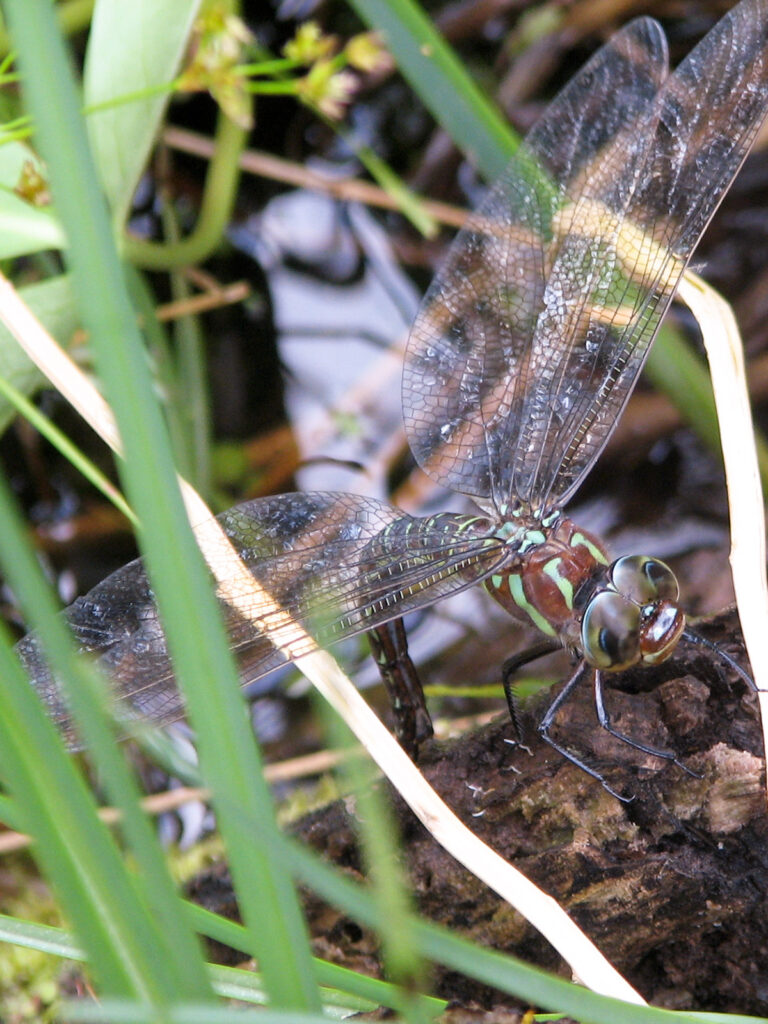
This dragonfly is just sitting on the log to lay its eggs, but some species repeatedly drop down and touch the water to release their eggs.
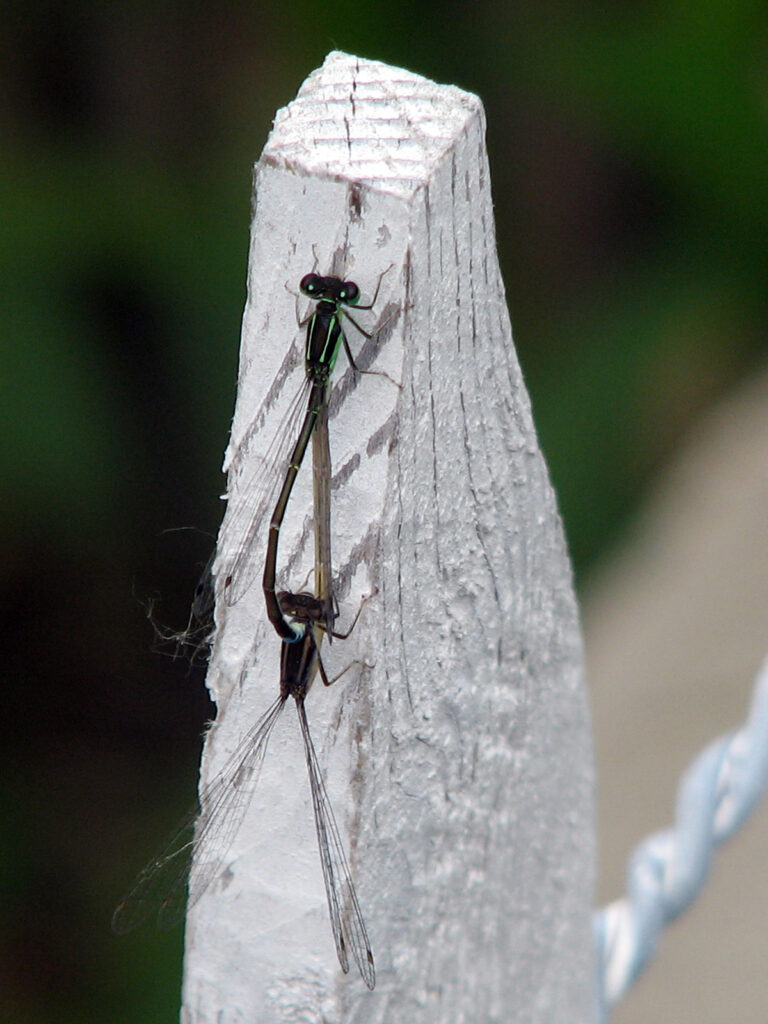
We haven’t seen dragonflies mating, but damselflies, as in this photo, are often mating near our ponds.

This Eastern forktail was actually much bluer than it appears in the photo. She’s laying eggs in the pond.
The nymph stage can last from one month to years, so some will overwinter in the pond and emerge the next year or later.
These nymphs eat many other things … such as mosquito eggs!
Cleaning the pond
We don’t clean our pond frequently (about every other year in the beginning but even less frequently later) since we are more interested in a healthy pond full of life rather than a merely ornamental, crystal clear pond. But sometimes the amount of vegetation becomes overwhelming, which is probably more of a problem in our small pond than in a larger one, and we have to go in and remove some of the plants from the center of the pond.
But what happens to all those dragonfly and damselfly nymphs living there, waiting to become adults?
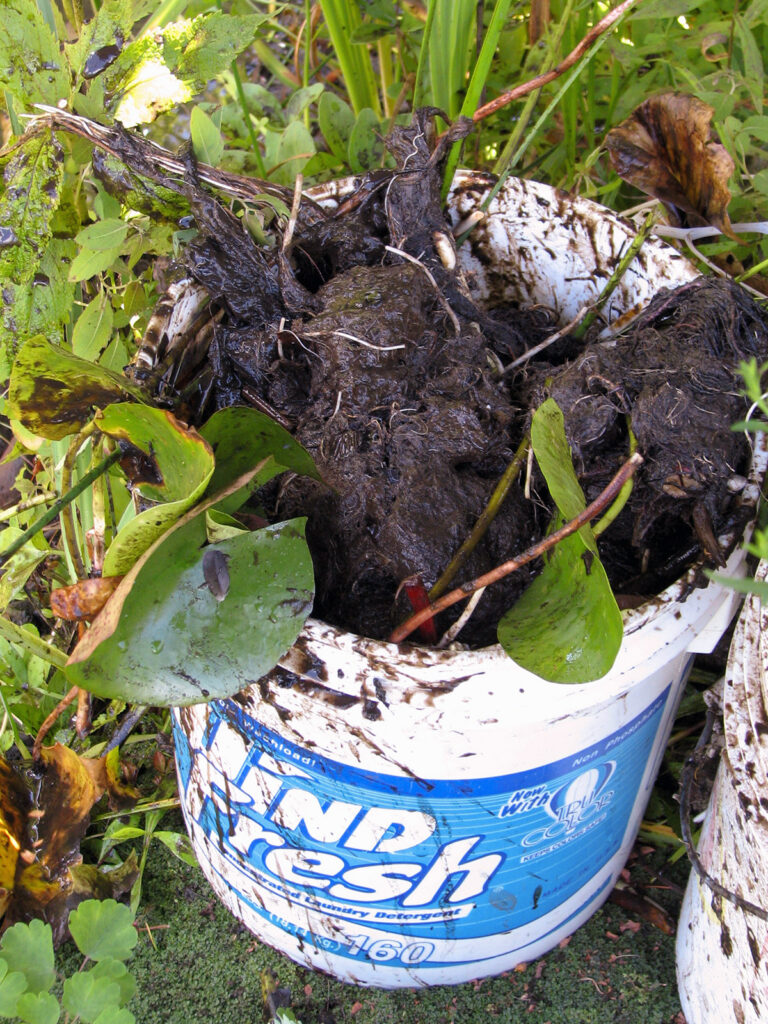
We put all our pond plant “trimmings” in buckets, wait a few hours, then go through the plant material looking for nymphs before throwing the plants onto the compost pile.
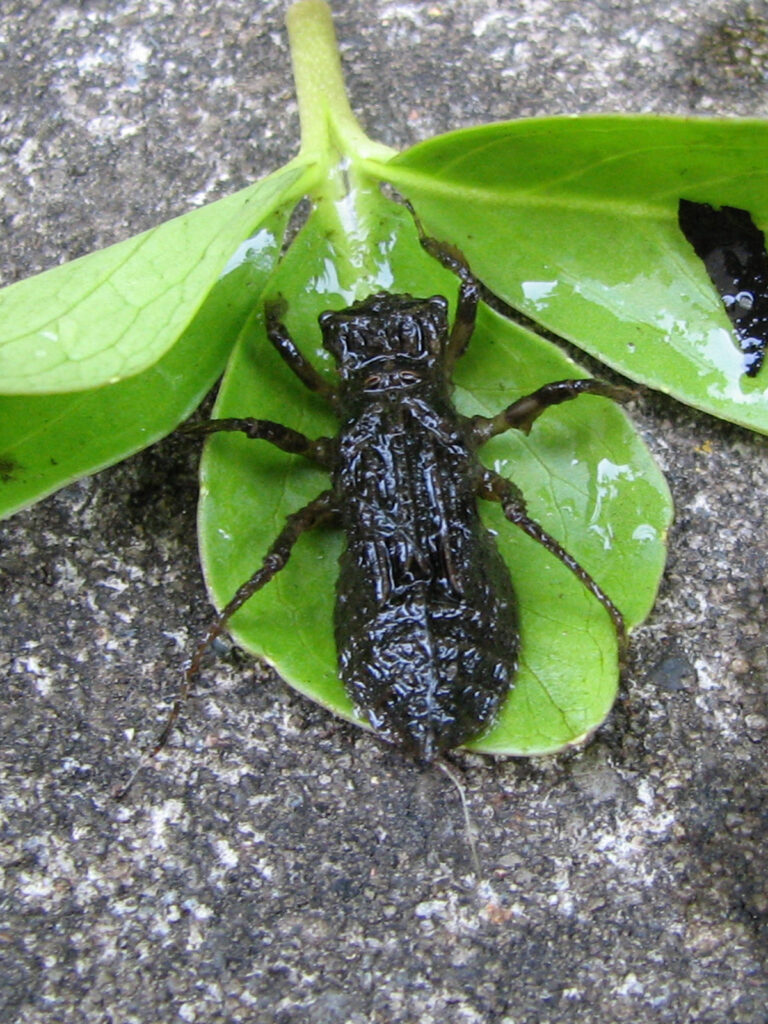
We find most of the nymphs at the bottom of the bucket, along with all the pond water and muck that has dripped from our plants, but I sometimes find some still in the plant materials.
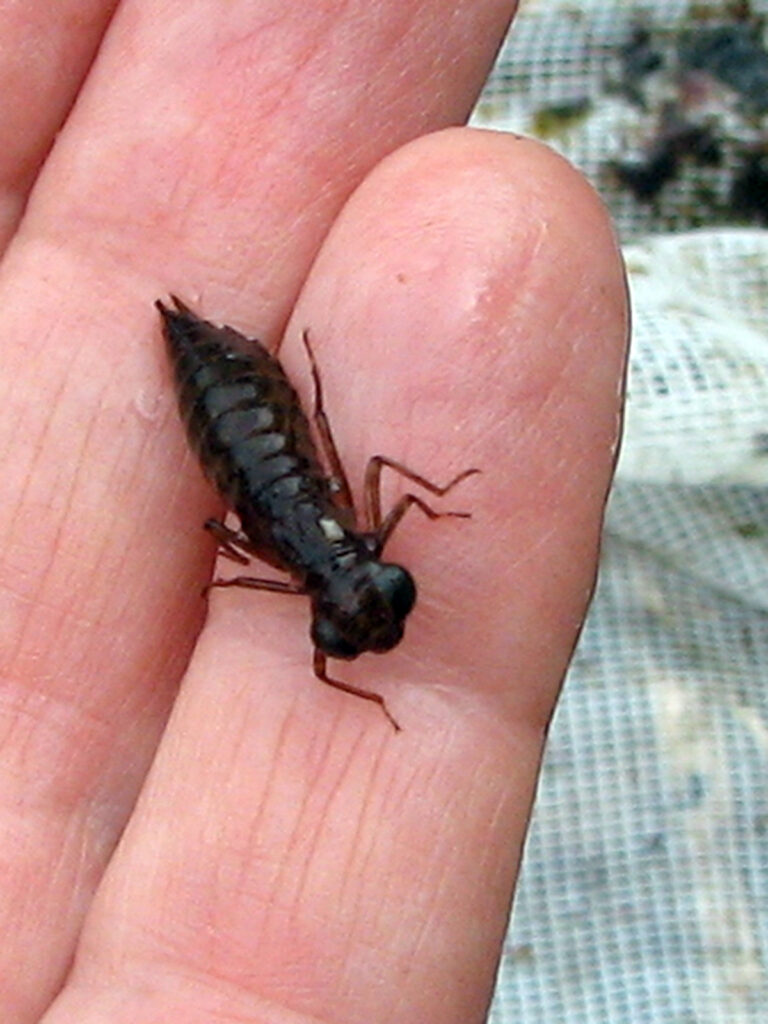
I’m sure we lose some, but we rescue quite a few — maybe even most of them since I try to be really careful.
Yes, it’s a pretty dirty job, but gratifying to know we’ve rescued our nymphs! (And though they may look fierce, they’re totally harmless.)
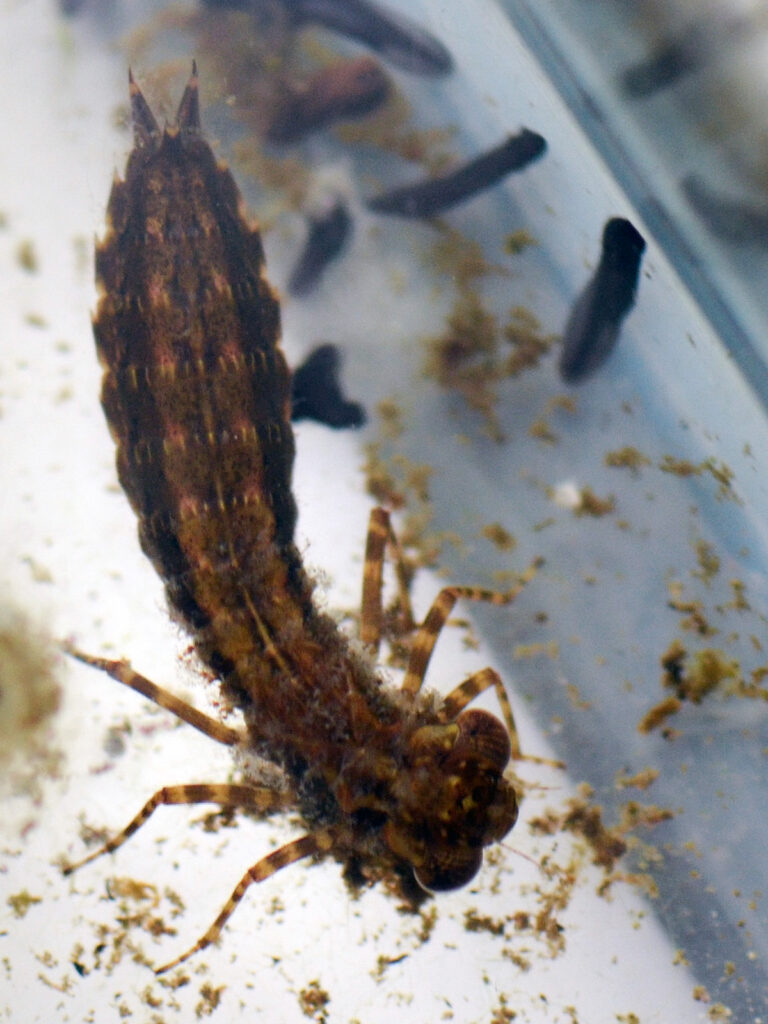
I discovered this nymph in our toad tadpole aquarium. (The toads had laid lots of eggs during a warm spell in early April, then the weather turned cold, so we brought them inside for a while. They’re the little black rectangles…)
This nymph was probably planning a great tadpole lunch until I removed him and put him back in the pond.
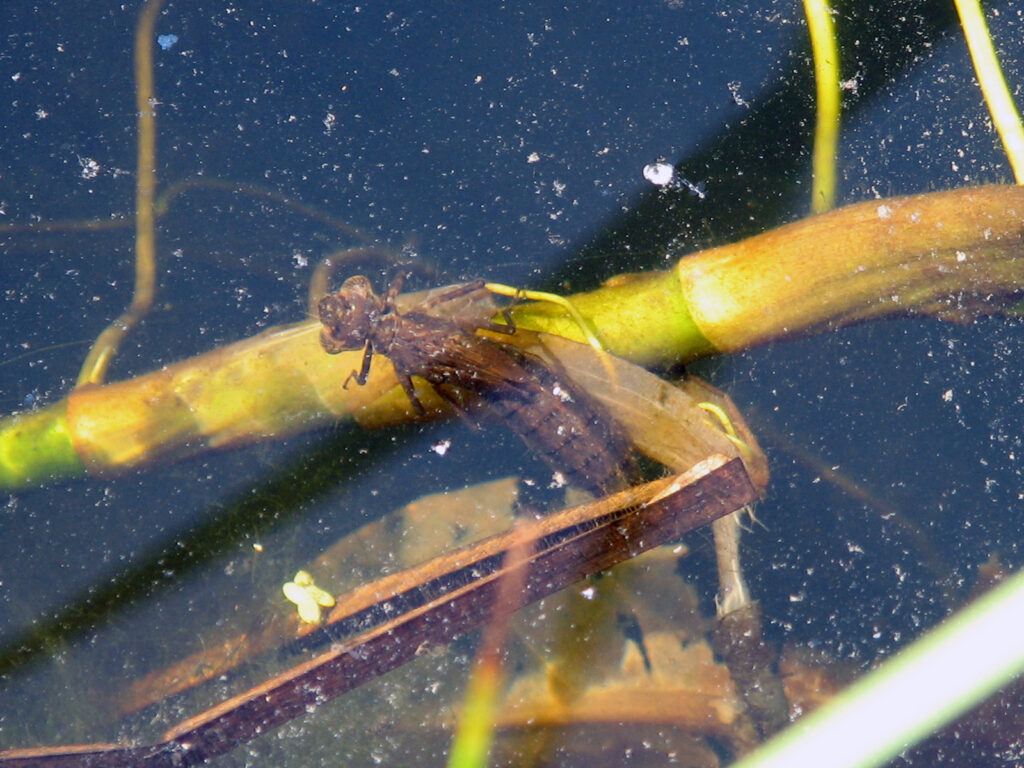
This dragonfly nymph is probably looking for some emergent vegetation as it prepares to emerge as an adult dragonfly.
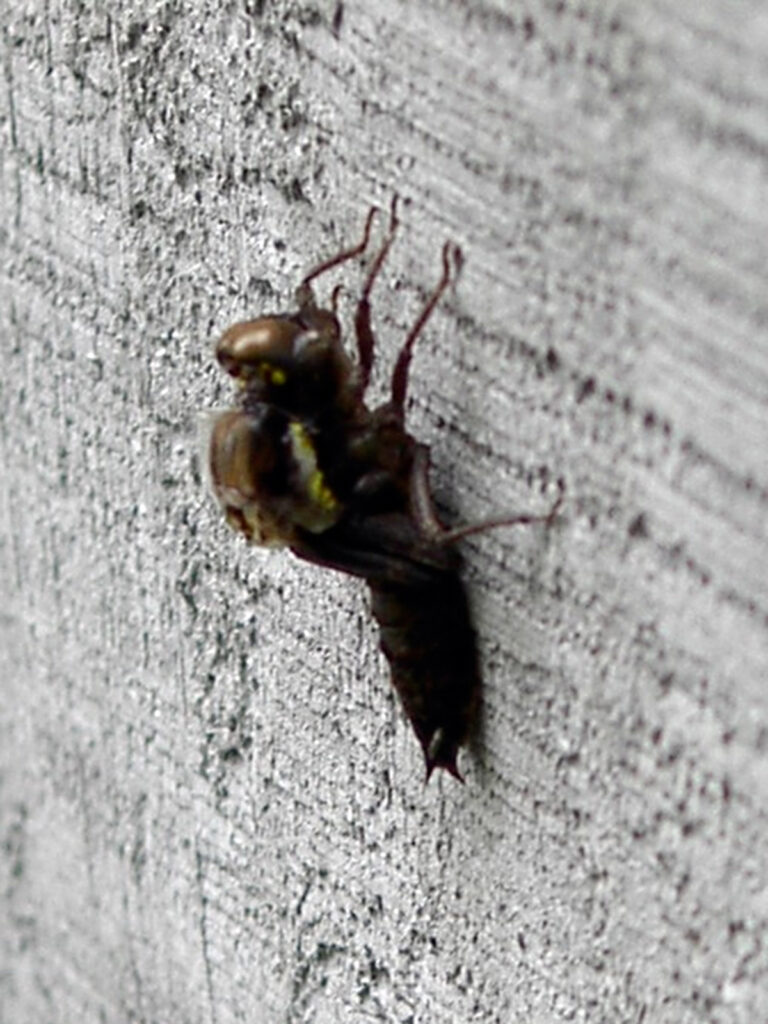
I have to admit I didn’t realize this was a dragonfly emerging when I took the photo many years ago. I just thought it was an interesting insect with a humped back.
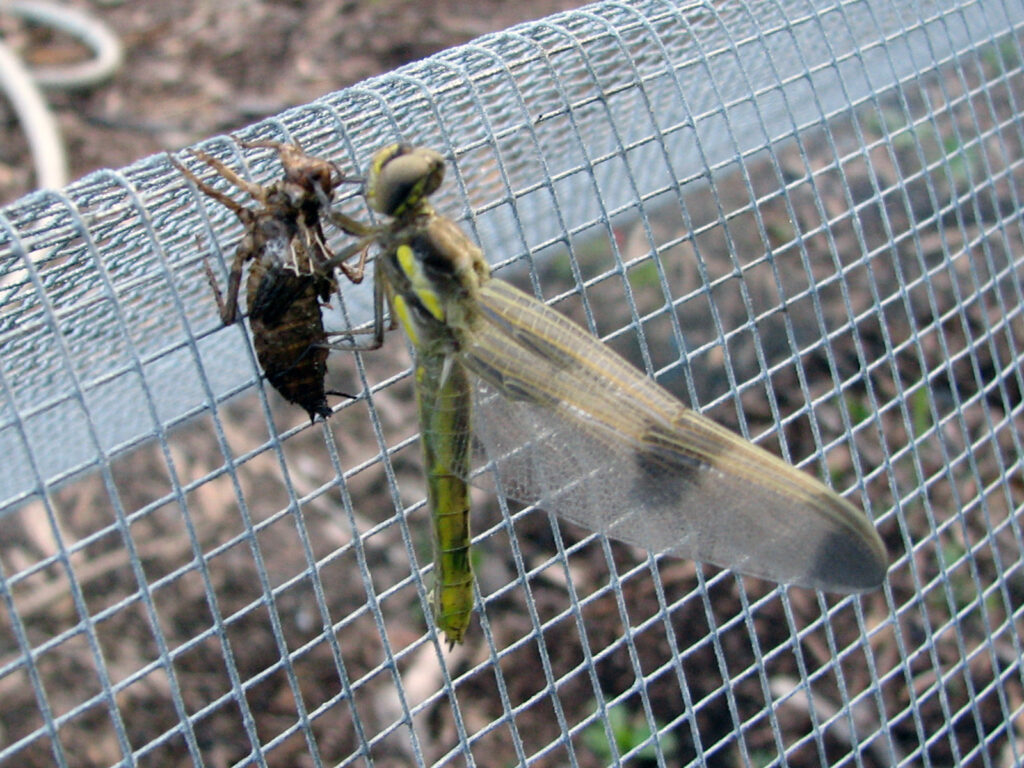
Here’s a dragonfly that’s fully emerged — it must have become very cramped inside that shell! Its last larval skeleton is technically called the “exuvia.” It’s amazing that those large wings can fit in such a small space!
The wings of this newly-emerged dragonfly (called a teneral) still have a milky color, but they’ll become clear after a while.
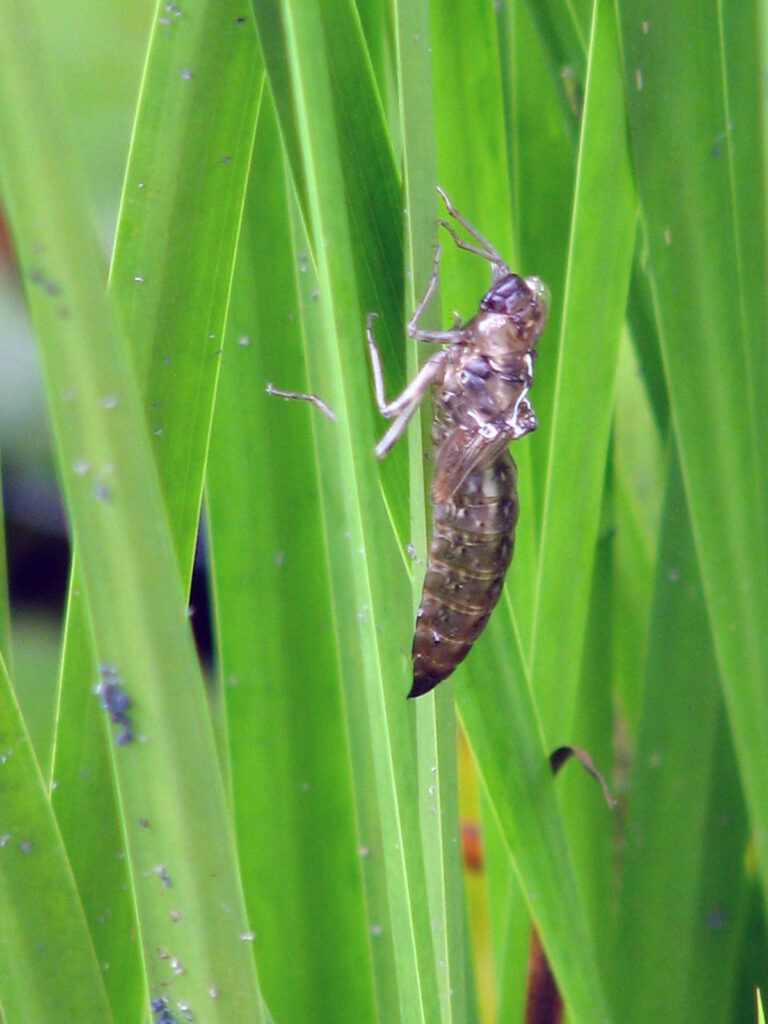
We see quite a few of these “exuvia” attached to emergent vegetation in the pond and elsewhere. (The exuvia is the empty “shell” it previously occupied before emerging.)
Yes, this is its empty shell even though it still looks occupied!
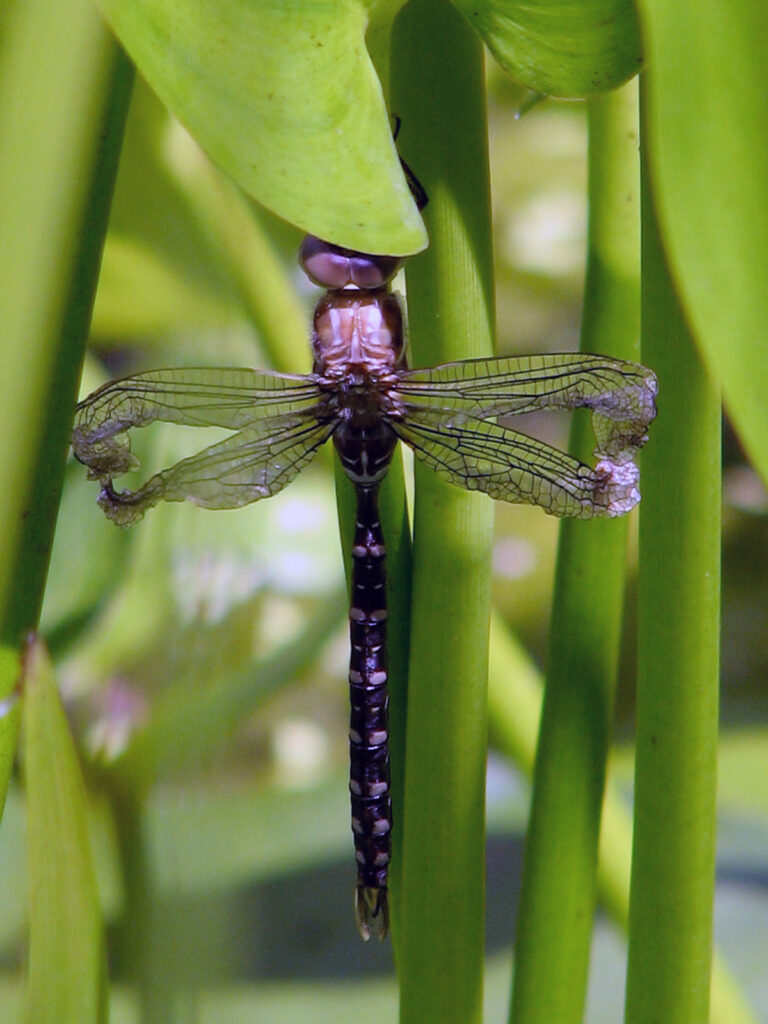
Unfortunately, some have problems with their wings upon emerging. Or maybe those are the ones I see most frequently since they can’t just fly away!
Resources
- Critters in Your Pond:
- British Dragonfly Society:
Reflections
Created and restored ponds increase local odonate species diversity, improve habitat connectivity and facilitate movement across the landscape. They also provide refuges where both common and locally rare species can thrive. Such ponds can achieve moderate to high levels of odonate diversity in as little as a year or two, with species diversity comparable to that at nearby natural wetlands.
~ Celeste Mazzacano et. al., Backyard Ponds: Guidelines for Creating and Managing Habitat for Dragonflies and Damselflies, published by the Migratory Dragonfly Partnership
